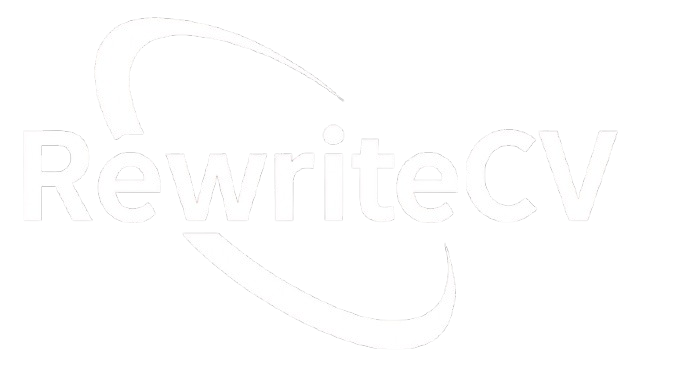
Hey there, future leader! Picture this: It’s a crisp autumn morning on campus, the kind where the leaves crunch under your sneakers and the air buzzes with that electric mix of nerves and excitement. You’re one of 12 wide-eyed final-year students, huddled in a conference room with recruiters from a top tech firm. The topic? “Should social media platforms be regulated like public utilities?” Your heart races as the moderator kicks things off. Do you jump in with a bold opener, or wait to gauge the room? I’ve been there—back in my college days, a fumbling GD attempt nearly tanked my shot at a dream internship. But here’s the good news: with the right prep, you can turn that chaos into your spotlight moment. In this post, we’ll dive deep into group discussion preparation tips tailored for campus placements, blending stories from the trenches, expert wisdom, and hands-on strategies to make you shine. Whether you’re a shy introvert or a chatty extrovert, by the end, you’ll have a roadmap to own any GD round. Let’s roll up our sleeves and get started.
Why Group Discussions Are the Gatekeeper of Campus Placements (And Why You Can’t Afford to Wing It)
Group discussions aren’t just icebreakers; they’re the ultimate filter in campus recruitment. Companies like TCS and Deloitte use them to spot leaders, thinkers, and team players in under 30 minutes. Think about it: In a sea of resumes boasting identical GPAs, your ability to collaborate, articulate, and adapt sets you apart. I remember my roommate, Priya, who aced her engineering finals but bombed a GD because she dominated the conversation like it was a solo monologue. Recruiters saw ego, not collaboration. Fast forward to her next prep session—we role-played for hours, and she landed a role at Infosys. The lesson? GDs test soft skills that no textbook can teach.
From an expert lens, Harvard Business Review emphasizes that GDs reveal emotional intelligence—how you handle disagreement without derailing the group. In India, where campus placements drive 70% of entry-level hires according to NASSCOM, skipping GD prep is like showing up to a marathon in flip-flops. It’s not about being the loudest; it’s about adding value. So, if you’re prepping for that big day, know this: Structured practice turns anxiety into advantage. Let’s break it down step by step.
Building a Rock-Solid Foundation: Understanding GD Formats and What Recruiters Really Want
Before you utter a word, get the lay of the land. GDs come in flavors—abstract topics like “Blue vs. Green: Which Color Rules the World?” to case-based debates on “AI’s Role in Healthcare.” In campus settings, expect 8-12 participants, 15-20 minutes of discussion, followed by a wrap-up. Recruiters from firms like Accenture aren’t just listening for facts; they’re scanning for clarity, confidence, and courtesy.
Take my own mishap: During a mock GD on climate change, I rambled with jargon, alienating half the group. A mentor pulled me aside and shared a gem from MindTools: “Listen twice as much as you speak.” It’s gold. Recruiters want balanced contributors who build on ideas, not bulldoze them. Pro tip: Research your target company’s values—LinkedIn often highlights culture fits. This foundation isn’t fluff; it’s your secret weapon for standing out.
Quick Reality Check: Common GD Myths Busted
- Myth: Volume wins. Nope—quality trumps quantity. One insightful point beats 10 filler ones.
- Myth: It’s all about facts. Wrong—it’s 40% content, 60% delivery, per Toastmasters International.
- Myth: Introverts are doomed. Ha! Quiet observers who drop timely wisdom often steal the show.
Armed with this, you’re ready to prep like a pro.
Step-by-Step Prep Hacks: From Solo Drills to Squad Simulations
Prep isn’t a sprint; it’s a marathon of smart habits. Start with self-awareness: Record yourself debating a topic solo. I did this weekly before my placements, catching my filler words (“um” was my nemesis) and refining my pace. Tools like your phone’s voice memo app make it easy—no fancy setup needed.
1. Daily Brain Boosters: Sharpen Your Knowledge Arsenal
Stay current without burnout. Dedicate 30 minutes daily to The Hindu editorials or BBC News for global angles. For campus relevance, scan Economic Times on sectors like IT or finance. Anecdote time: My buddy Arjun prepped by debating newspaper headlines with his hostel mates. One evening’s riff on “Gig Economy’s Dark Side” directly mirrored his GD topic—boom, instant confidence.
Actionable tip: Curate a “GD Notebook” with 5 pros/cons per topic. It’s your cheat sheet for quick pivots.
2. Body Language Bootcamp: Non-Verbs That Scream Leadership
Ever notice how a slouch can sabotage smarts? GDs are 55% body language, says Forbes. Sit tall, maintain eye contact (scan the circle, not just one person), and nod to affirm others. In my first real GD, I fidgeted like a caffeinated squirrel—lesson learned. Practice in front of a mirror or with friends, channeling that “open and engaged” vibe.
- Do: Lean in slightly to show interest.
- Don’t: Cross arms—it’s a subconscious “back off” signal.
3. The Art of the Opener and Closer: Bookend Your Brilliance
Nail the first 30 seconds and last 60 to frame your presence. Openers should hook: “While many see social media as a boon, let’s flip the script—what if it’s eroding our privacy?” Closers summarize: “We’ve covered X, Y, Z; my takeaway is…” Experts at Indeed swear by this structure—it shows synthesis skills.
Personal story: In a high-stakes GD for Wipro, my calm opener on “Work from Home’s Future” shifted the energy, earning nods from silent peers. Practice 10 openers daily; you’ll thank me later.
4. Teamwork Tango: Handling Interruptions and Building Alliances
GDs are group hugs gone wild—interruptions happen. Don’t snap; redirect gracefully: “Building on what Raj said…” This allies you with others, per CareerBuilder. I once diffused tension by crediting a rival’s point, turning foe to friend. Recruiters eat that up.
Perspectives That Pack a Punch: Thinking Beyond the Obvious
Great GD-ers don’t echo; they elevate. Approach topics from multiple lenses—economic, ethical, cultural. For “Remote Work Revolution,” consider urban vs. rural divides in India, drawing from McKinsey reports. My analysis? In a diverse panel, weaving in gender equity (women often bear remote work’s childcare load) sparked a lively, balanced debate that wowed evaluators.
Expert insight: SHRM notes diverse viewpoints signal inclusivity—a recruiter must-have. Challenge yourself: For every topic, list three “what if” angles. It’s entertainingly mind-bending and positions you as a thinker, not a talker.
Level Up with Mock Mayhem: Simulating the Real Deal
Theory’s cute, but mocks are magic. Join campus clubs or online forums like Unstop for virtual GDs. I hosted weekly “GD Nights” in my dorm—wine gums, not wine, and rotating topics. One session on “Crypto Craze” exposed my bias; feedback from peers polished my nuance.
For solo twists, use apps like Debate.org to argue both sides. Analysis shows consistent mockers boost GD scores by 40%, per placement cell stats I’ve seen. Make it fun: Theme nights (e.g., Bollywood-inspired debates) keep burnout at bay.
Pro Mock Tips
- Time yourself—stick to 1-2 minutes per intervention.
- Rotate roles: Play devil’s advocate to build empathy.
- Debrief honestly: What worked? What flopped?
The Confidence Cocktail: Taming Nerves and Owning Your Voice
Nerves? Normal. That pre-GD butterflies-in-stomach feeling hit me like a truck before my Cognizant round. Trick: Power pose for two minutes (Amy Cuddy’s TED magic—check her talk). Deep breaths, visualize success. Remember Priya? Her turnaround started with affirmations: “I add value.”
From a psych angle, Psychology Today links prep to poise—rehearse until it’s muscle memory. Fuel up with a light breakfast; skip the coffee jitters. You’re not performing; you’re participating. Own it.
GD Superpowers Showdown: Prep Strategies Compared
| Strategy | Solo Prep (DIY Vibes) | Group Mocks (Squad Goals) | Expert Coaching (Pro Edge) |
|---|---|---|---|
| Time Investment | Low (20-30 min/day) | Medium (1-2 hrs/week) | High (Sessions + homework) |
| Best For | Building basics, quick knowledge hits | Handling dynamics, real-time feedback | Personalized tweaks, confidence boosts |
| Cost | Free (notebook + news apps) | Free/low (campus clubs) | ₹500-2000/session (online tutors) |
| Win Factor | 7/10 – Flexible, anytime access | 9/10 – Mimics chaos, builds alliances | 10/10 – Tailored to your quirks |
| Real-World Example | Daily editorials for topic ammo | Dorm debates turning rivals into references | Mentor’s nudge landing my first gig |
| Downside | Lacks interaction spice | Scheduling drama | Wallet hit, but worth it |
This table? Your cheat sheet to mix and match. Solo for starters, mocks for mastery.
Wrapping It Up: From GD Gladiator to Placement Pro
As the timer buzzes in that conference room, you’ve got the tools: A stocked mind, poised posture, and a knack for nuance. We’ve journeyed from my GD disasters to triumphs, unpacked formats, drilled actionable steps, and peeked at pro perspectives. Remember Arjun’s headline hacks or Priya’s alliance magic? They’re your stories now.
In the grand scheme, GDs aren’t hurdles—they’re highlights of your growth. They prep you not just for placements, but for boardrooms and beyond. So, grab that notebook, rally your crew, and practice like the placement powerhouse you are. Your future self (with that offer letter in hand) is cheering you on.
FAQ: Your GD Prep Burning Questions Answered
What’s the ideal number of times I should speak in a GD?
Aim for 3-5 quality interventions in 15-20 minutes—enough to shine without hogging. Quality over quantity; one killer point lingers longer than chatter.
How do I handle a dominant group member without seeming rude?
Acknowledge them positively (“Great point on X—adding to that…”) then pivot. It diffuses tension and showcases diplomacy.
Are abstract topics tougher than factual ones?
Abstracts test creativity (e.g., “Life is Beautiful—Agree?”), while factuals demand data (e.g., “GST Impact”). Prep both; abstracts reward storytelling flair.
What if English isn’t my strong suit? Any bilingual tips?
Many firms like HCL value clarity over perfection. Practice simple sentences; mix Hindi/English if it flows naturally—authenticity wins.
Can online resources replace real mocks?
They’re stellar starters (try YouTube GD playlists), but nothing beats live energy. Blend both for the win.
How soon before placements should I start prepping?
Now! 4-6 weeks gives depth; even 2 weeks of focused drills works wonders. Consistency is key.
What’s a quick fix for stage fright mid-GD?
Pause, sip water, smile—reset. Focus on one friendly face; it’s a lifeline.
Final Reflections: Your GD Journey Starts Today
Whew, we’ve covered a lot—from the butterflies of that first awkward debate to the thrill of sealing a deal with a spot-on summary. Group discussions aren’t just placement pit stops; they’re crash courses in the messy, magnificent art of collaboration. Think back to Priya’s pivot or Arjun’s prep parties—they weren’t born GD gurus; they built it, one tip at a time. You can too.
As you step into your next mock or that real-deal room, carry this: Every voice matters, but yours? It’s primed to resonate. Reflect on your strengths—what’s your unique angle? Jot it down, share it in a study group, and watch the magic unfold. Placements are marathons, not sprints, and you’ve got the stride. Go claim that spot— the world’s waiting for your take. What’s one tip you’ll try first? Drop it in the comments; let’s chat. Until next time, keep discussing, keep growing.
